L'Audi he won the 2024 edition of the Dakar with Carlos Sainz with one of the three prototypes lined up at the start, theAudi RS Q e-tron fully electric traction, powered by a battery and a motor generator with the function of range extender, entered in the Rally Raid Vehicle T1U (Ultimate) category. The crews were on board the three prototypes Mattias Ekström/Emil Bergkvist, Stéphane Peterhansel/Edouard Boulanger And Carlos Sainz/Lucas Cruz
Audi RS Q e-tron that won the Dakar
L'Audi RS Q e-tron which triumphed at the Dakar is equipped with three powertrains. Two electrical units derived from Formula E generate a total power of 286 kW (389 hp). The two MGU (Motor Generator Unit), positioned on each axle, managed the traction, while a third thermal unit performed the function of generator For Reload the high voltage battery (800 Volt). In practice there is a motor generator that produces electricity for traction to which 2 electric motors are connected.
The MGUs derived from Formula E have been adapted to the conditions of the desert of Saudi Arabiasignificantly different from those of city circuits.
There is one 52 kWh battery which powers the 2 electric motors and which is recharged during the special tests by the range extender, the motor generator, a high-performance 4-cylinder 2.0 TFSI petrol engine with 300 HP (turbo direct petrol injection) derived from the DTM. Several transfers were tackled in electric mode.
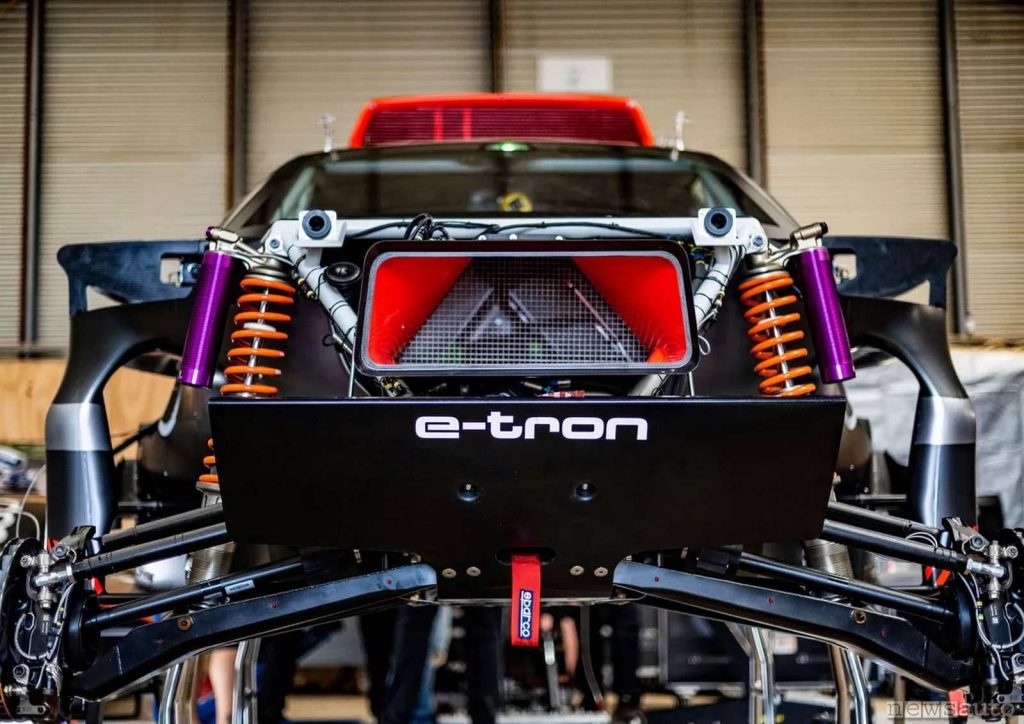
The two electric motors, the front and the rear, discharge power to the four wheels independently with totally electronic management with two electronically managed limited slip differentials (front and rear). The gearbox is single speed, like most electric cars (they don't have a gearbox). The front and rear suspensions are independent, the brakes are Brembo.
Audi RS Q e-tron changes 2024
In view of the 2024 Dakar the team took advantage of the accidents of Stephane Peterhansel And Carlos Sainz to the Dakar 2023, to further strengthen vehicle safety. The main objective was to reduce vertical acceleration when landing from large jumps. The engineers worked on the springs, shock absorbers and underbody, optimizing load distribution.
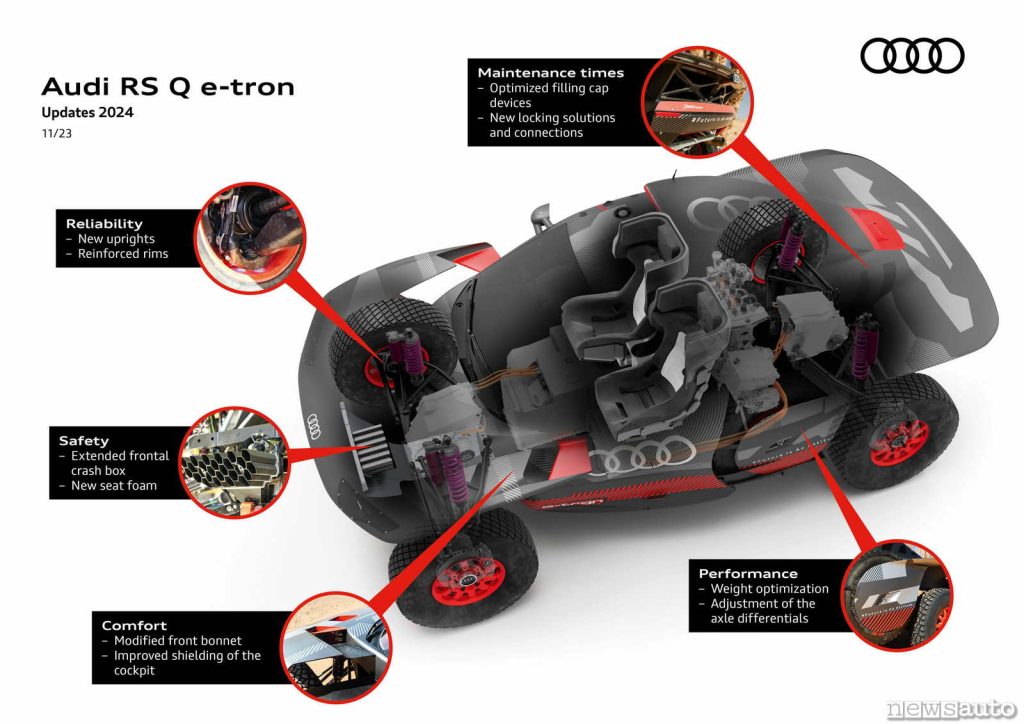
A second crucial aspect was the padding of the seats, with a focus on the rigidity of the materials and the geometries of the seats, considering the influence of the passenger compartment temperature on the behavior of the foams. Finally, crew protection during a hard frontal landing has been improved with a CFRP crash box (thermoplastic polyurethane mixed with carbon fiber) placed at the front end of the frame, which offered a superior absorption without compromising the attack angle, fundamental in rally raids.
In the past, considerable damage has occurred due to stones which got stuck between rims, brake discs and suspension struts. The 2024 configuration has provided more space to facilitate the expulsion of stones and debris.
At the same time, Audi Sport adopted sturdier BF Goodrich rims and tyres. There were no punctures and damage to the tyres. Sainz was able to dominate until the end above all thanks to his teammates who stopped along the way and handed over their wheels to Sainz.
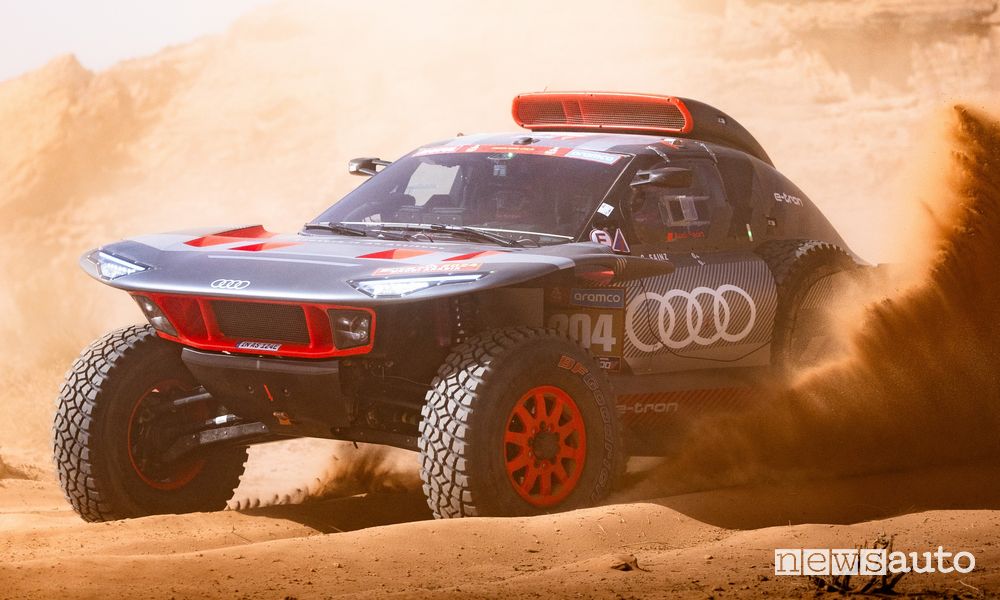
TECHNICAL SHEET Audi RS Q e-tron (Dakar 2024)
| Model | Audi RS Q e-tron (Dakar 2024) |
| Vehicle type | Rally raid vehicle (T1U category – alternative engines) |
| Chassis | Tubular steel frame combined with carbon fiber/Zylon composite structural components |
| Transmission | All-wheel drive with electrically driven axles |
| Electric transmission on each axle | 2 Audi MGU05 Formula E propulsion modules, 1 per axle |
| Total power | 286 kW |
| Transmission | A single transmission per axle, including a limited-slip differential (software-based), a virtual center differential (software management) with freely selectable torque distribution on the front and rear axle |
| Drums | High-voltage battery system (HVBS), approx. 370 kg (wet), lithium-ion cells, usable battery capacity approx. 52 kWh, charging with maximum power of 220 kW while driving via battery conversion unit power |
| Energy conversion unit | 2.0-liter four-cylinder turbo engine from the DTM coupled via a shaft with a generator (Audi MGU05 from Formula E) |
| Electronics | On-board voltages 12V/48V/800V |
| System control unit | Bosch ECU MS 7.4, Bosch VCU MS 50.4P |
| Power management | Motec PDM32 |
| Data recorder | 4 x Bosch C 80 |
| Display for driver/co-pilot | 2 x Bosch DDU 10 |
| Lights | LED headlights and rear lights |
| Steering | Electro-hydraulically assisted rack and pinion steering system |
| Suspensionthe | Independent suspension front and rear, double wishbone suspension, coilover spring/damper unit, adjustable gas pressure shock absorbers (Reiger) |
| Brakes/Recovery | Hydraulic dual-circuit braking system with a “brake-by-wire” system on each front and rear axle, with brake force distribution freely selectable by the driver and electronically controlled recuperation performance, light alloy brake calipers, ventilated steel brake discs internally front and rear |
| Wheels | Forged aluminum wheels, front/rear: 8.5 x 17 inches |
| Brakes | Brembo |
| Tyres | BF Goodrich front/rear 37×12.5 R17 |
| Dimensions | Length 4,670 mm, width 2,300 mm, height 1,950 mm |
| Weight | minimum weight 2,100 kg without drivers |
| Fuel tank capacity | Max. 340 litres |
| Performance | 0-100 km/h Less than 4.5 seconds (on soft ground), top speed limited to max. 170 km/h |



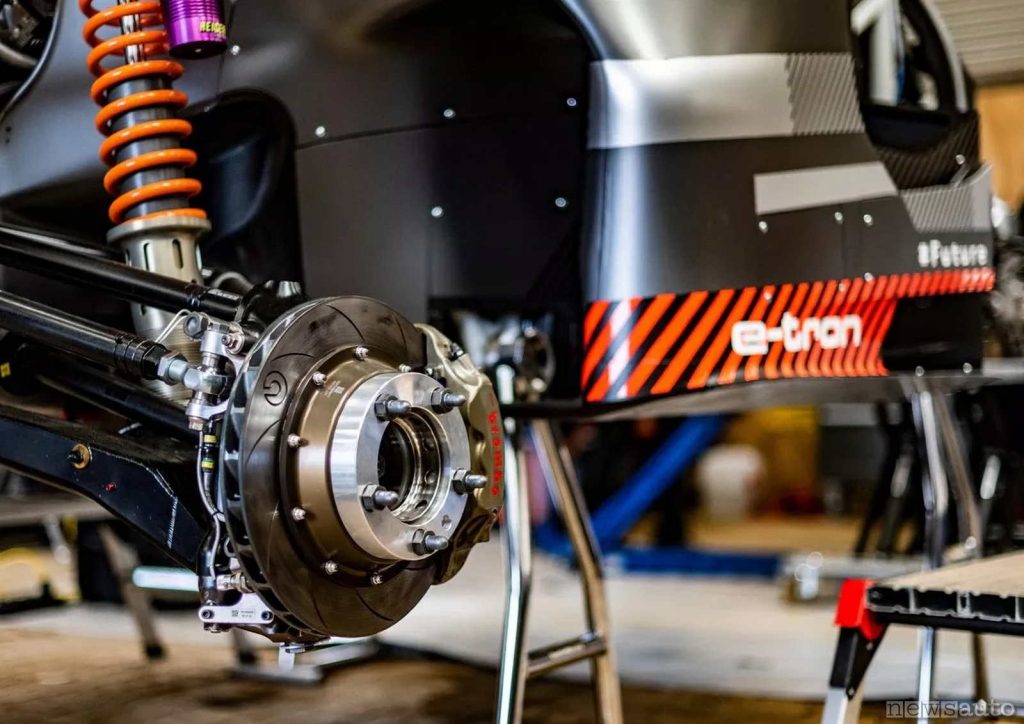
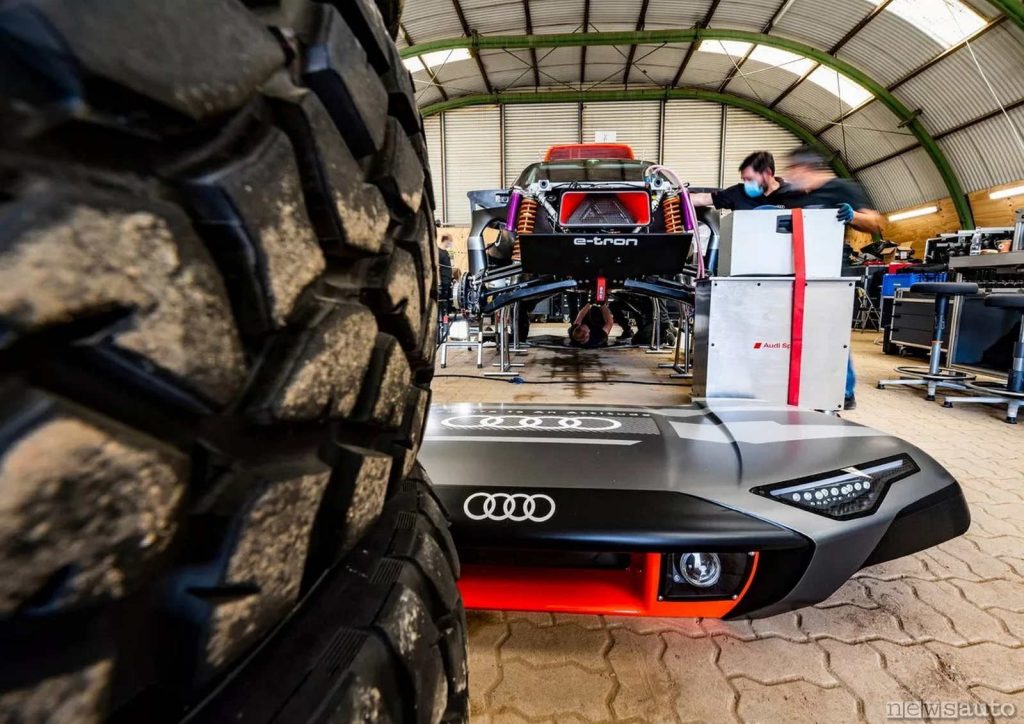


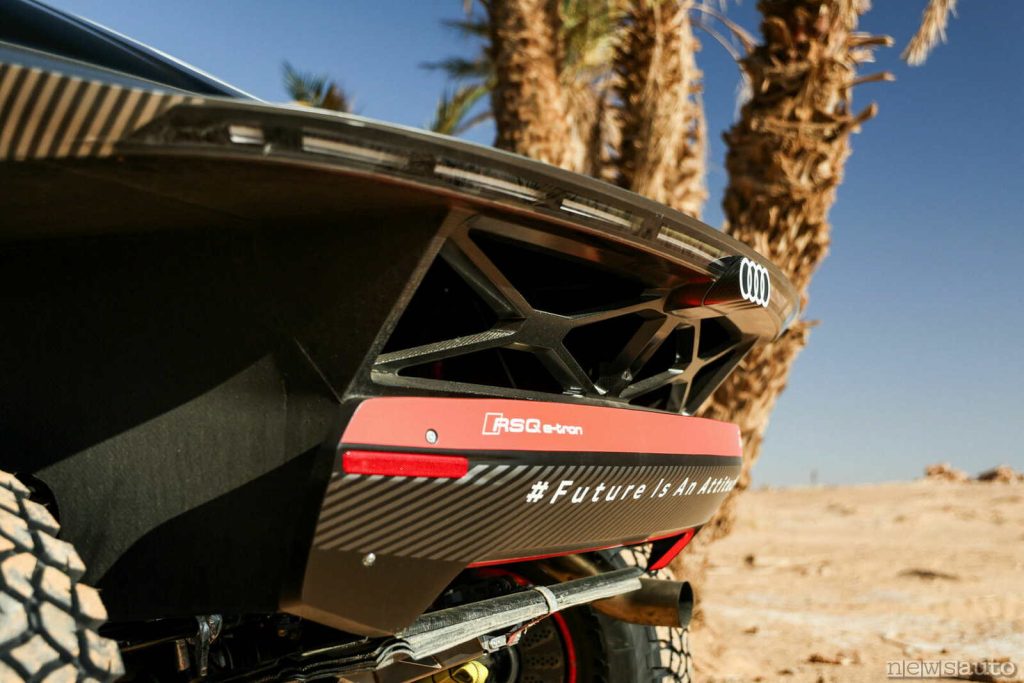
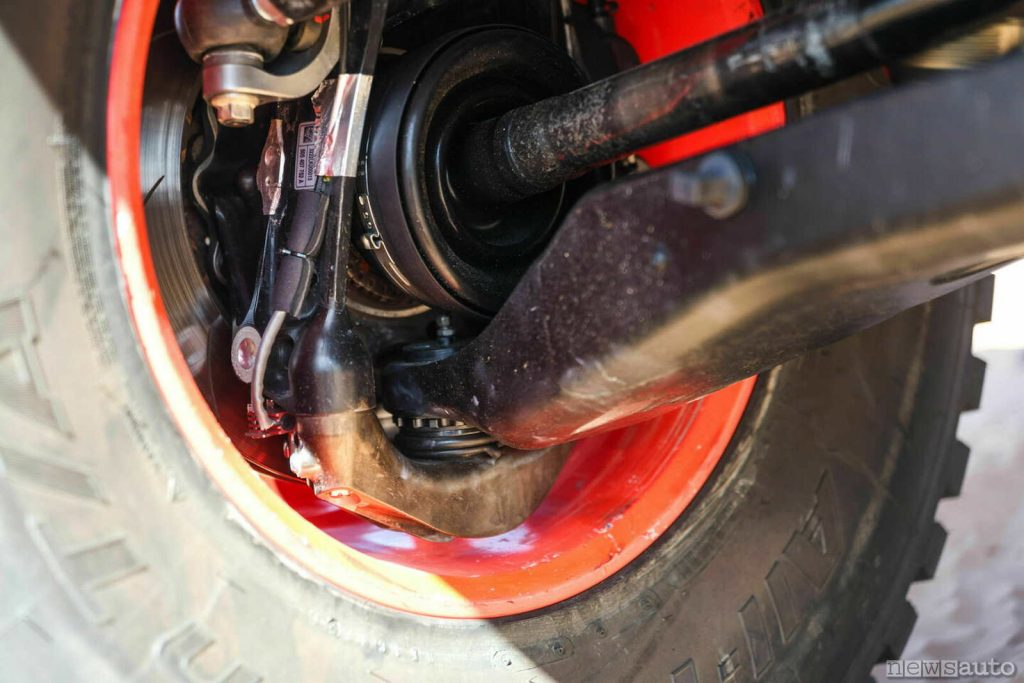
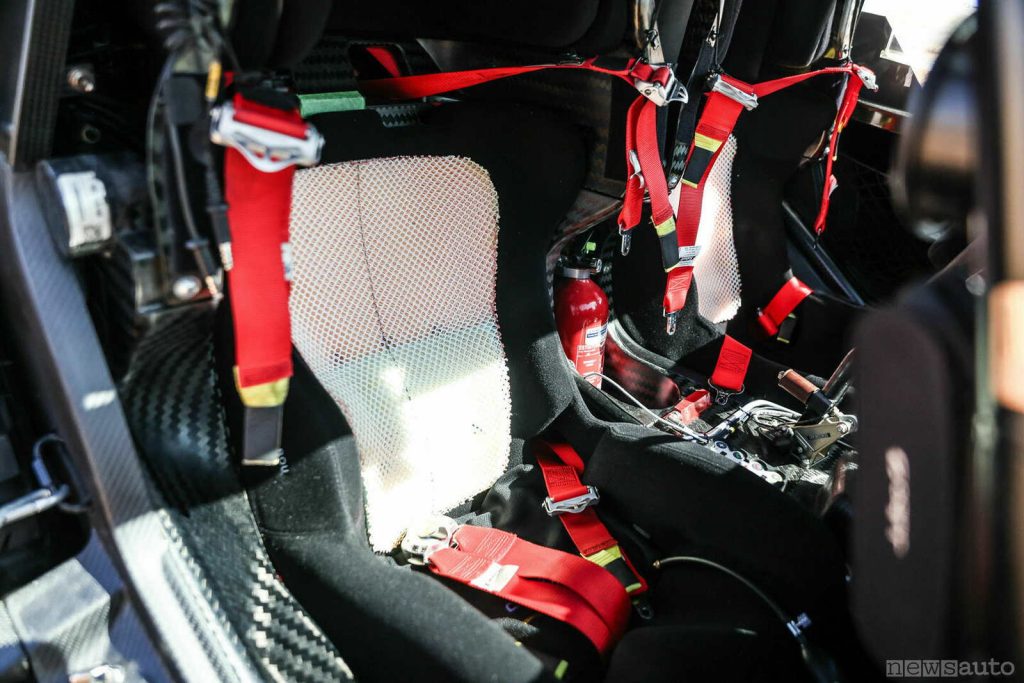
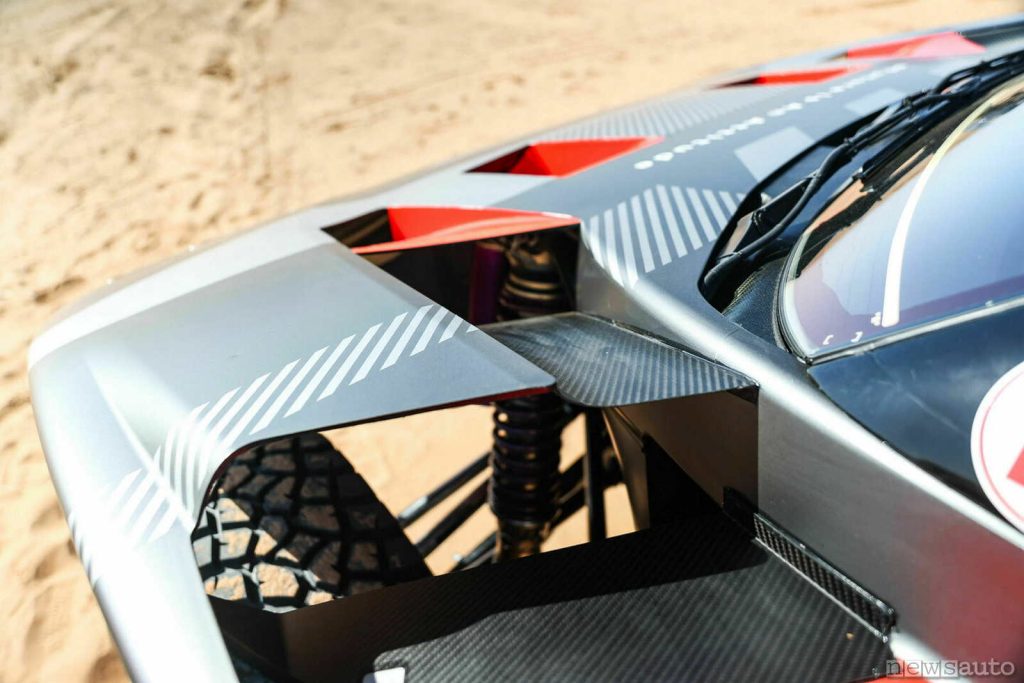

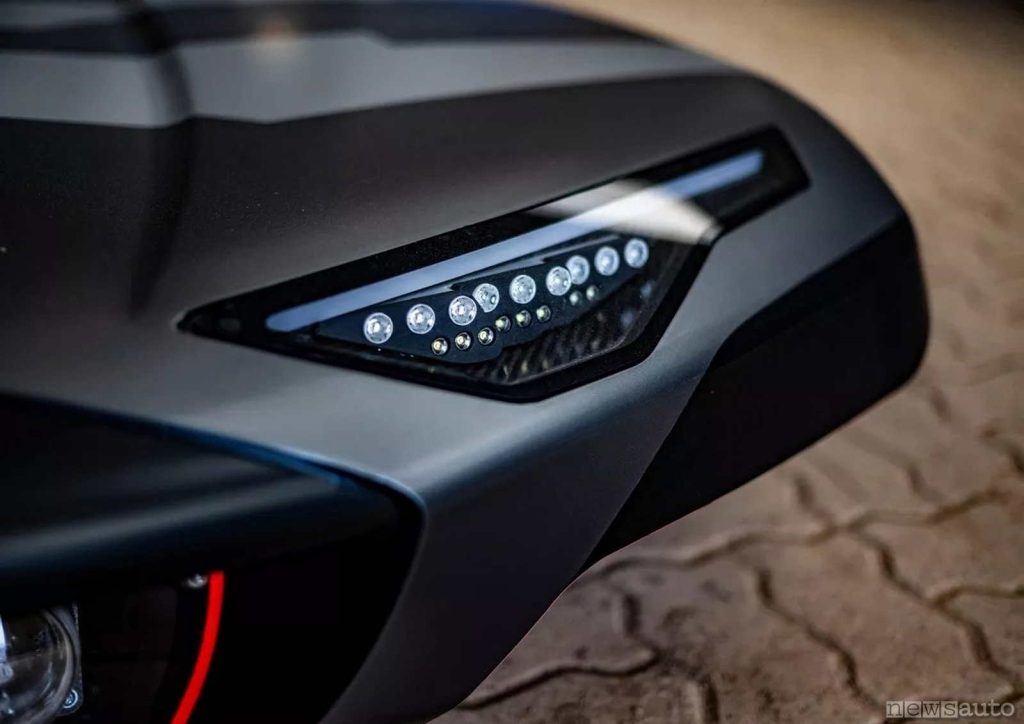
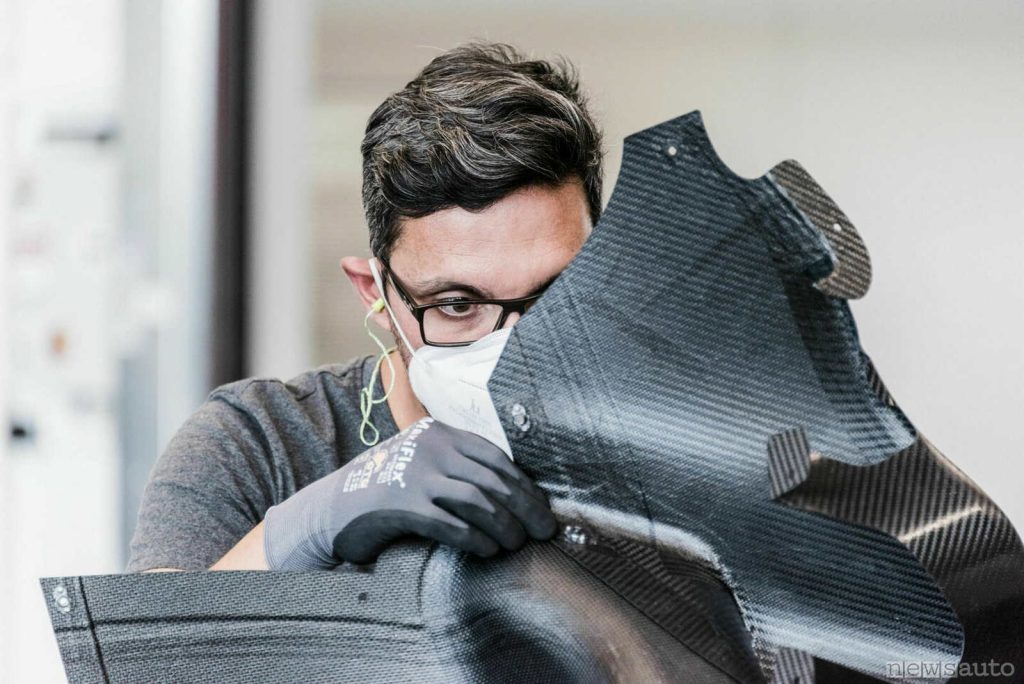
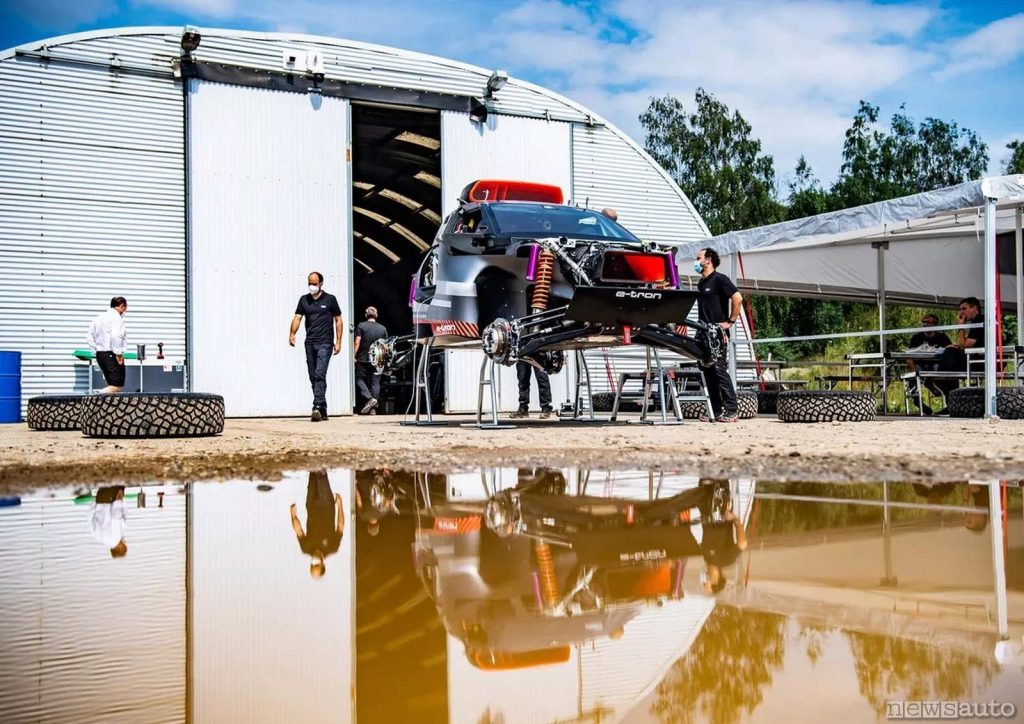
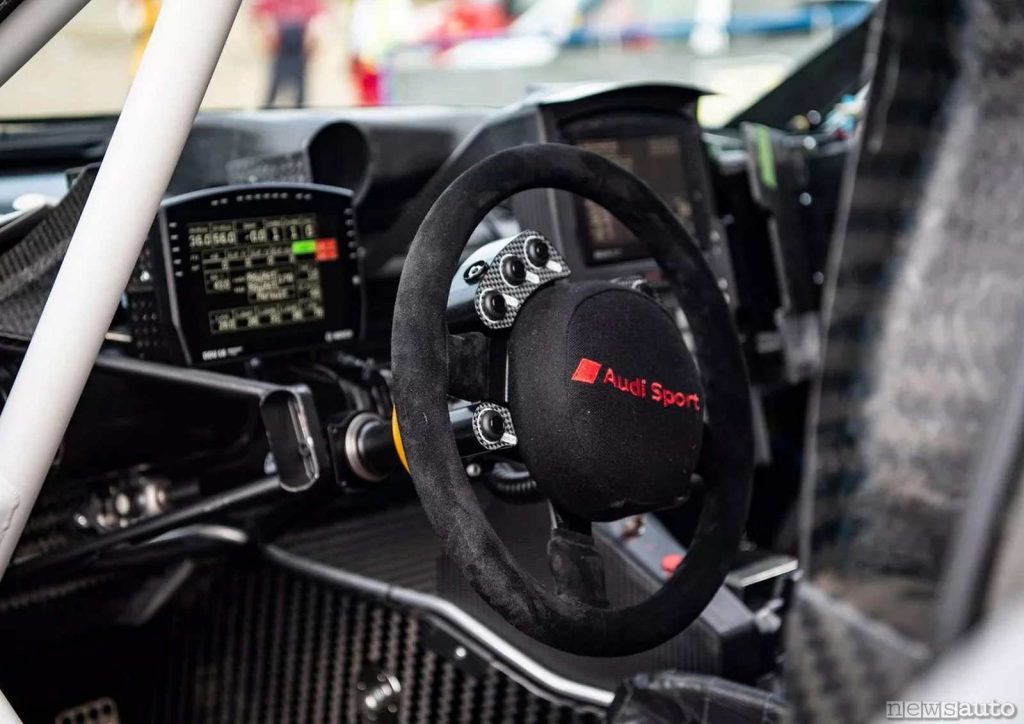


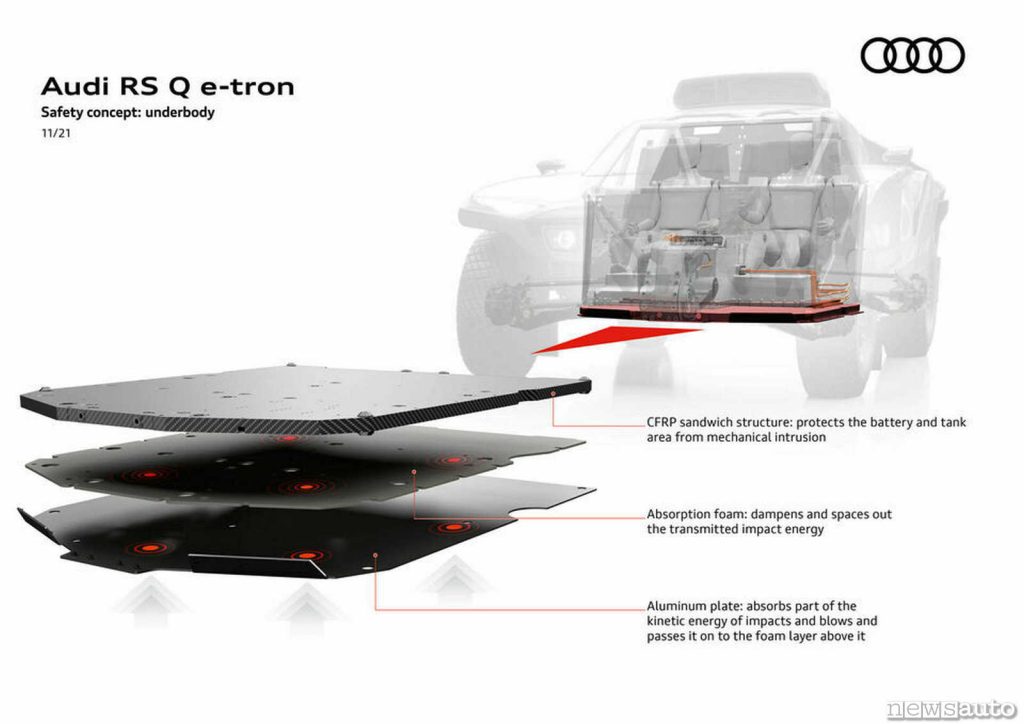
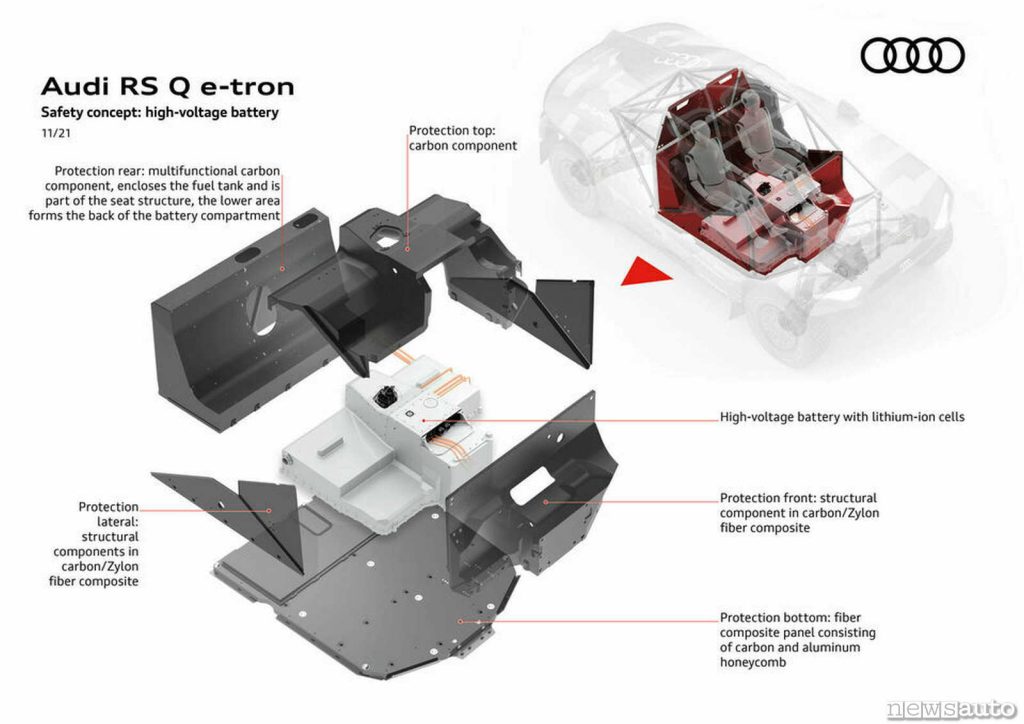
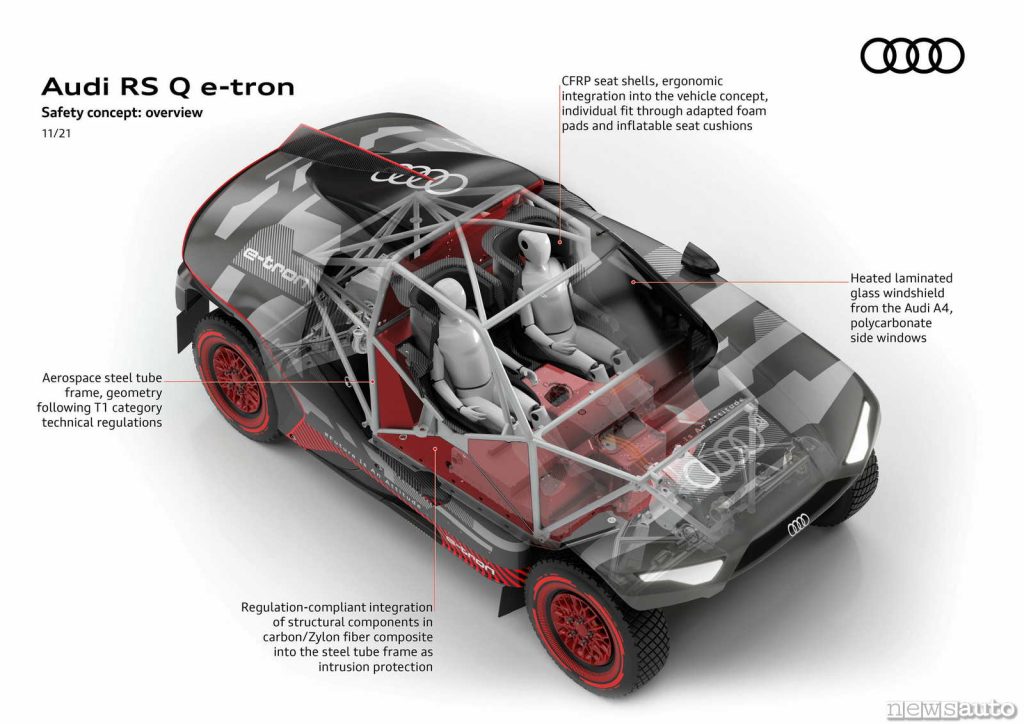
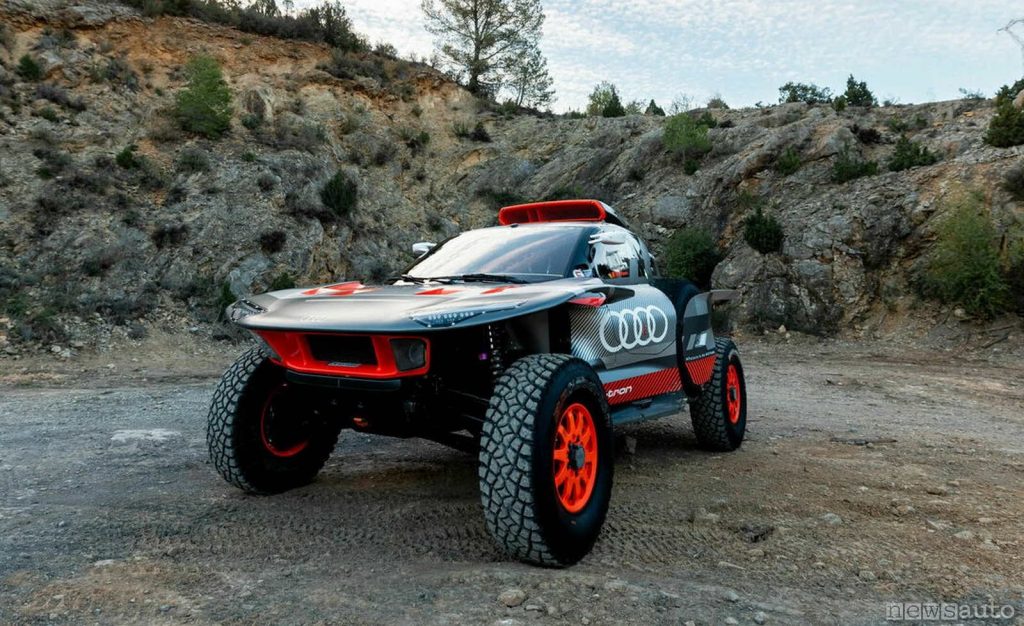
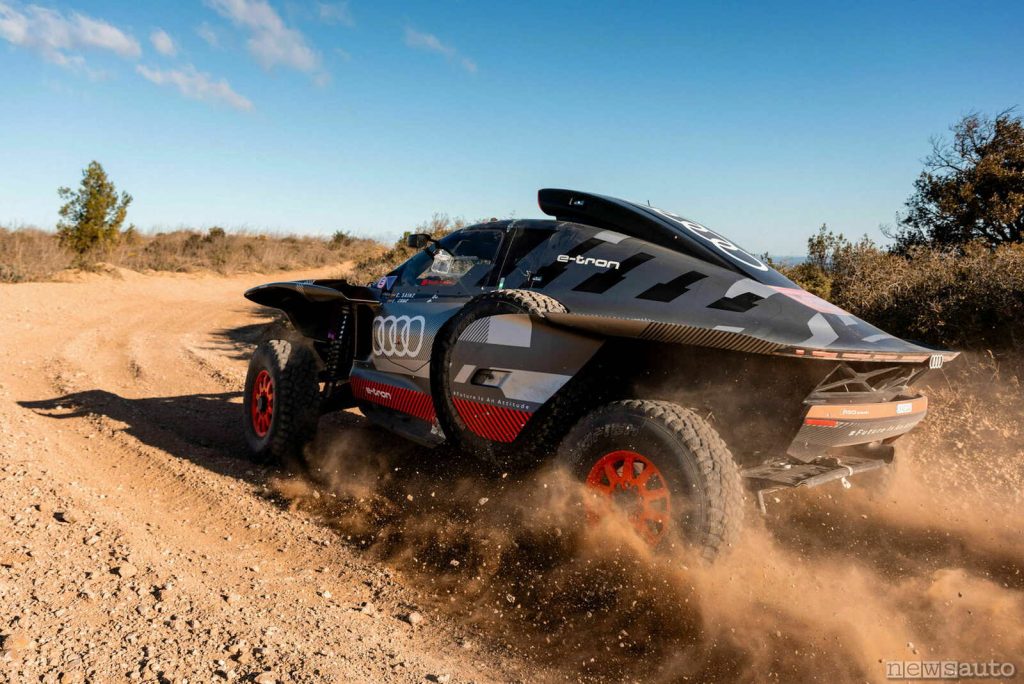
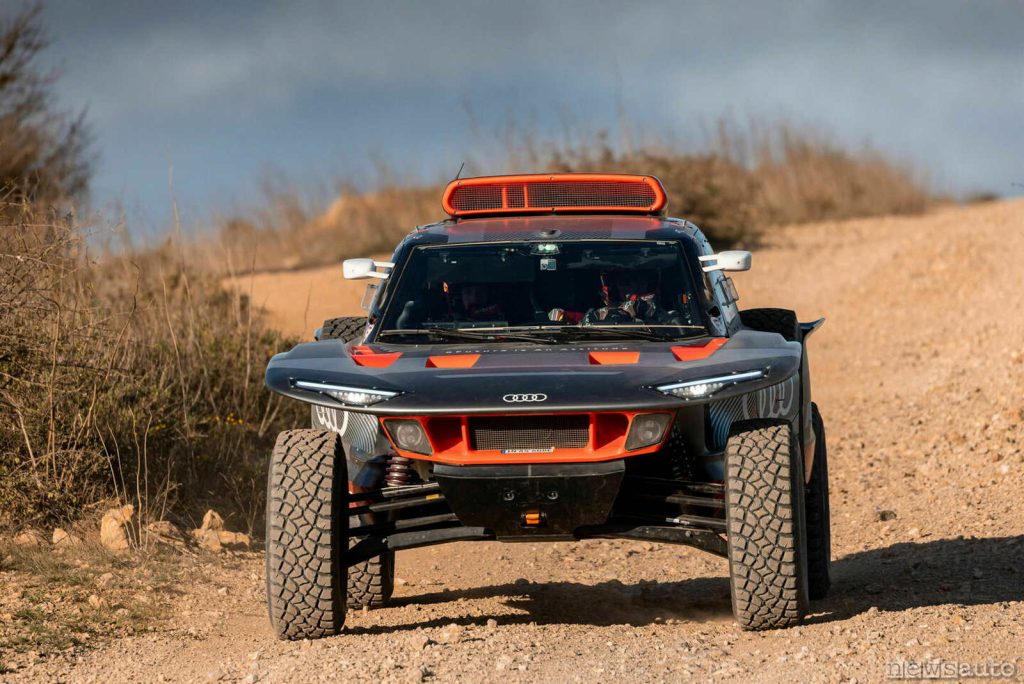
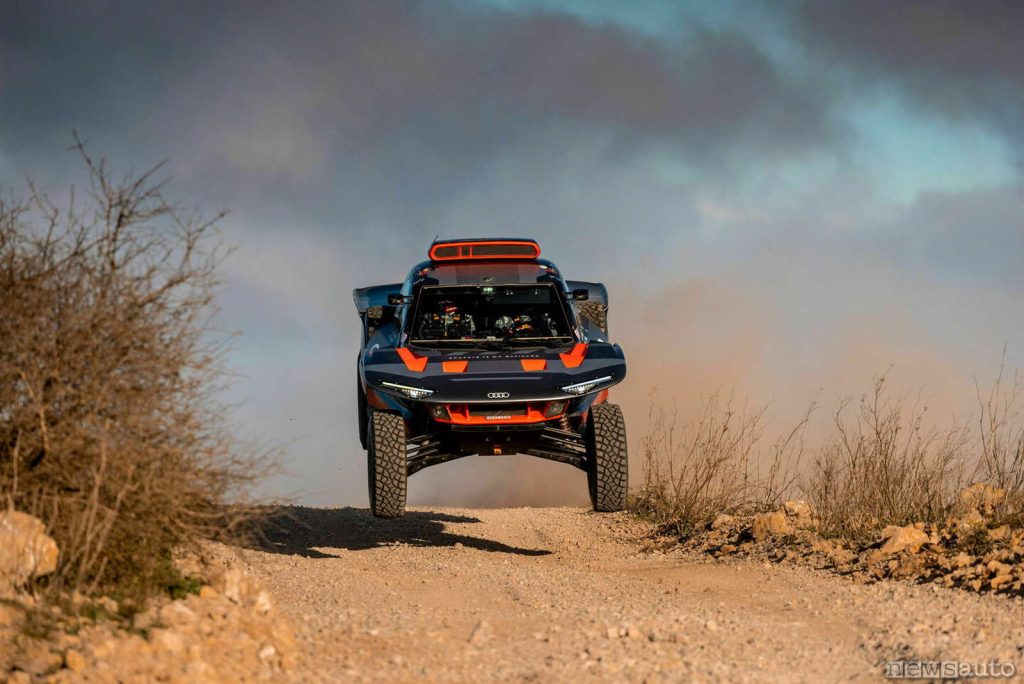
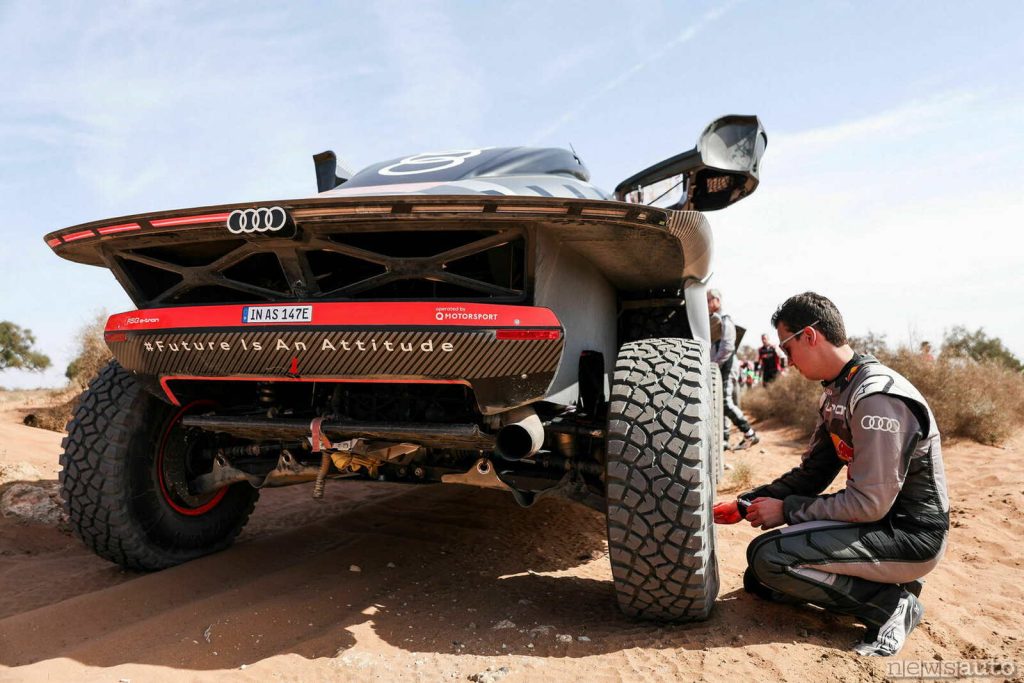
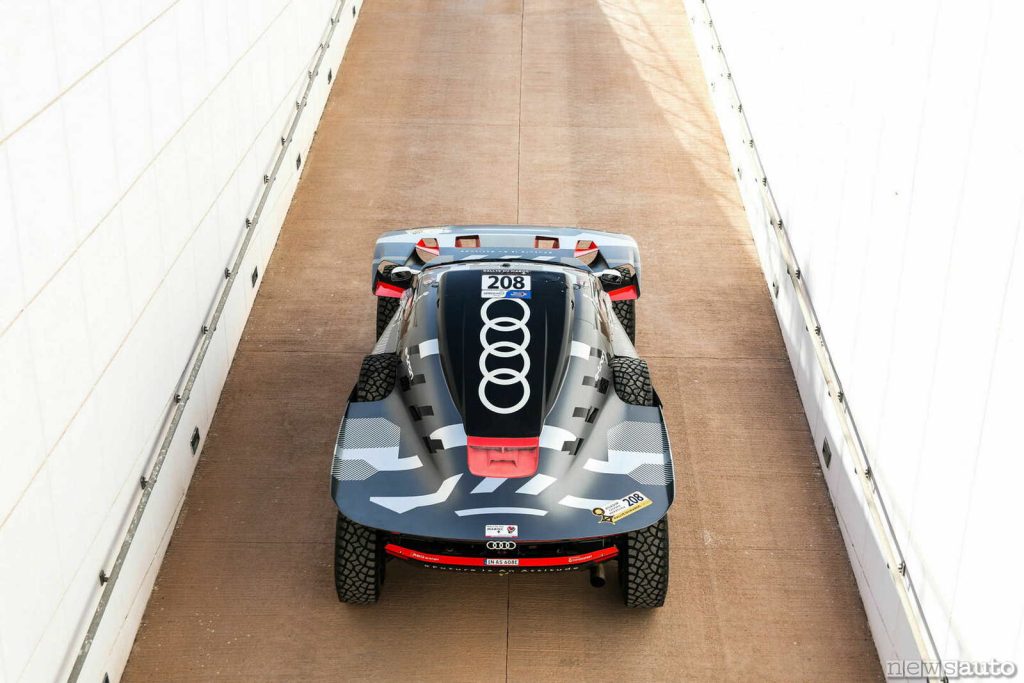
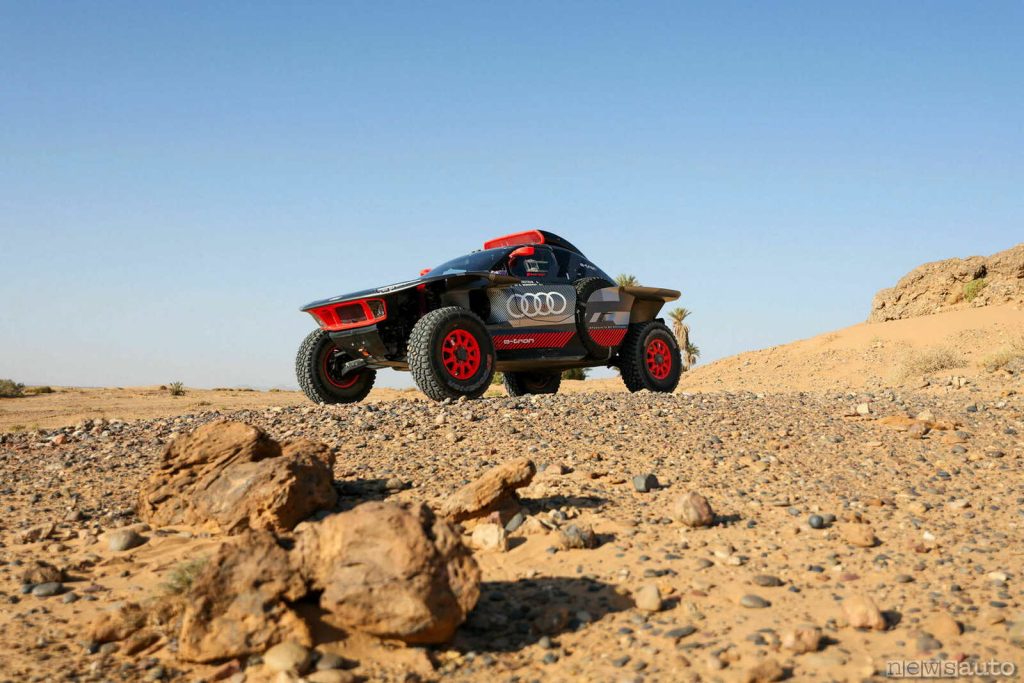
Audi drivers at the Dakar 2024
Audi fielded 3 crews of drivers at the 2024 Dakar, made up of Carlos Sainz – Lucas Cruz, Mattias Ekström – Emil Bergkvist And Stéphane Peterhansel – Edouard Boulanger.
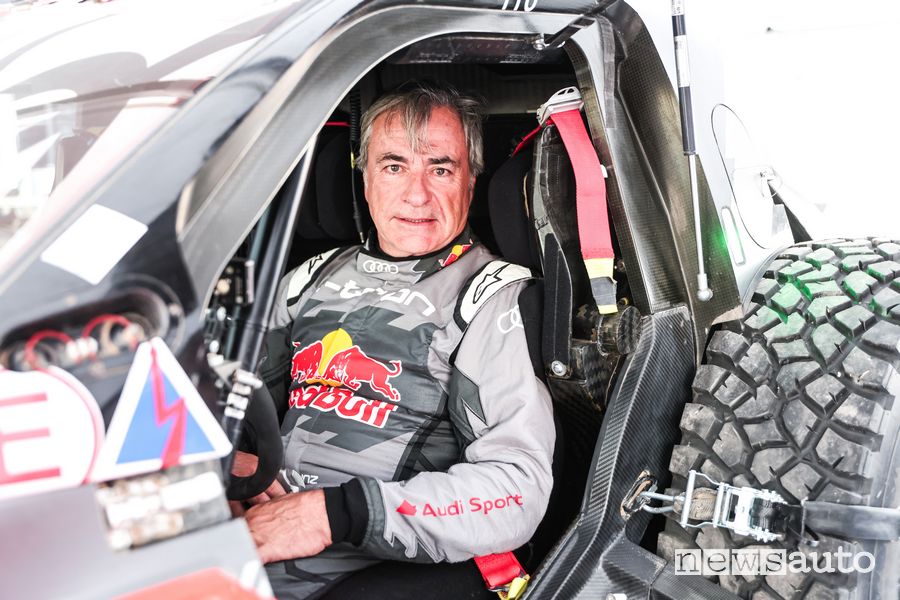
Photo Audi RS Q e-tron Dakar 2024
Read also:
→ Final report on DAKAR 2024
→ Italians at the Dakar Rally 2024 arrival
→ Program 2024, route
→ All the news on the Dakar 2024
→ Everything about the Dakar Rally
→ Off-road and 4×4 activities
If you are passionate about off roadfour-wheel drive and off-road adventures, don't miss the ELABORARE4x4 magazine elaborate.com/4×4-subscription
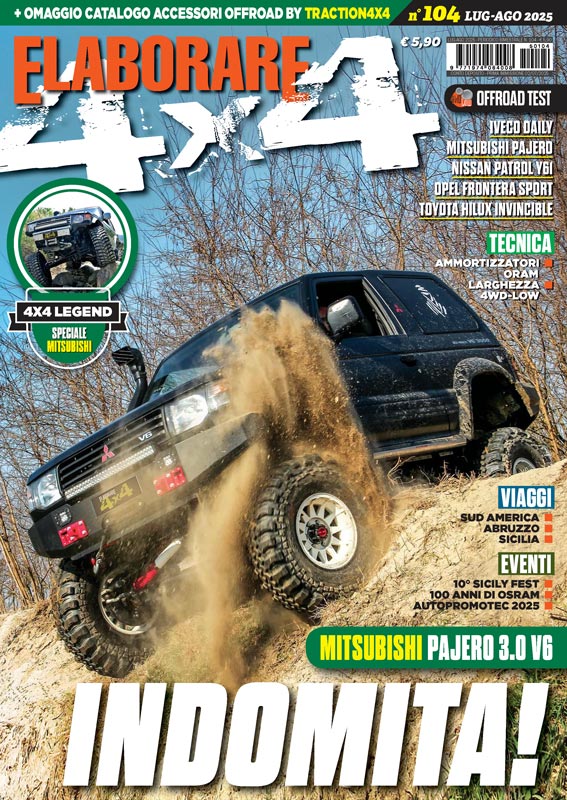
→ What do you think? Drop by discussions on the FORUM!
#Audi #etron #prototype #won #Dakar












